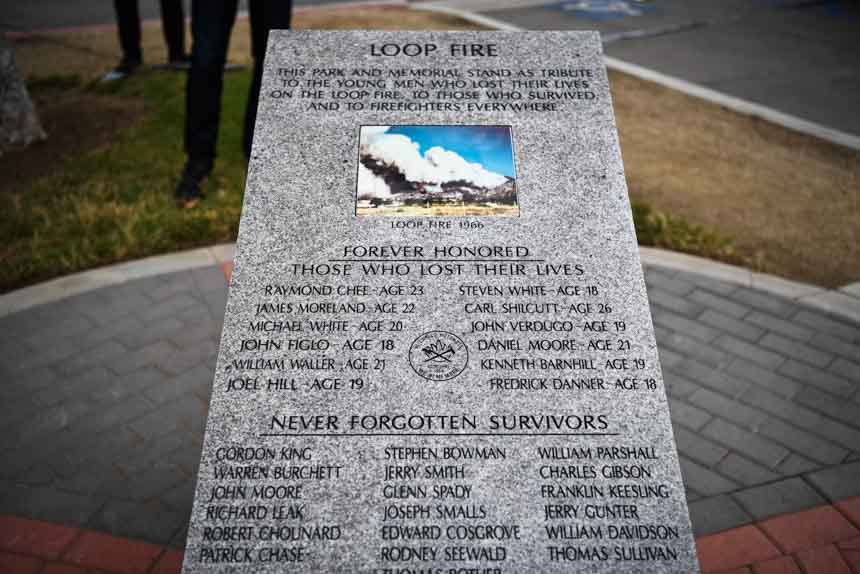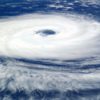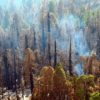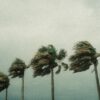Loop Fire Recap
This week marks the anniversary of another infamous fire disaster. Two winters of below average rainfall, fuel moistures at critical levels, and multiple months of Santa Ana events lead to a historically unique Southern California autumn in 1966. A faulty power line sparked a fire before dawn on November 1, 1966 near Slymar, CA in Los Angeles County (near 2016’s Sand Fire). Abundant Santa Ana winds quickly drove the blaze to 2,000 acres around the steep terrain of Loop Canyon in the Angeles National Forest. This past Tuesday saw the fifty year anniversary of the Loop Fire tragedy.
While the fire was seemingly under control, two crews entered steep terrain to help further contain the blaze and were surprised by an unexpected rapid flare up and chimney effect with little time for escape. A dozen hotshots of the 31-member crew perished that day. In remembrance, the Angeles National Forest (ANF) and the Cleveland National Forest (CNF) held a commemorative ceremony this week at the El Cariso Regional Park. Hundreds of firefighters were in attendance to remember the fallen. Several survivors spoke to an emotional and somber crowd, according to accounts from the event.
Tragedy in 60 Seconds
According to official reports conducted after the Loop Fire, at the time of the accident the fire was essentially out. It had burned for two thousand acres under the influence of Santa Ana winds, which had become significantly lighter by 2 pm when the El Cariso crew began working the fire. Rich Leak, a surviving crew member described their assignment as “to cold trail the fire’s edge down the ridge line and tie into the County Crews at the bottom.” According to Leak, little fire activity was observed in the area as it appeared there were no active flames on the ridge line they would be working. He even stated that their main concern while working on the steep mountainside was danger from rocks and rockslides rather than the fire itself.
In attempting to construct a fire line, the crew reached a point on the ridge where following the fire’s edge became unsafe and almost impossible in the steep terrain. Their crew boss “made the decision to cut an indirect line and tie into the dozer line at a different location.” As they moved into this secondary location, “a spot fire started in the ravine below us and all hell broke loose.” Leak eerily likened the moments that followed to being on a charcoal grill, with lighter fluid igniting at once with a “whoosh”, and fast moving shockwave-like flames ensuing.
The official investigation concluded that the crew experienced 30-60 seconds of 2500 degree heat without fire shelters or proper PPE (fire resistant clothing). Ten members of the crew lost their lives in those 60 seconds and two more died later in the hospital due to the burnover. Fifteen of the 19 surviving crew members were also injured by the flash of flames.

The Loop Fire memorial marker in El Cariso Park in Sylmar, CA. (Photo Credit: Stuart Palley)
Lessons Learned
In firefighting, sometimes lessons are learned in harsh ways. The explosive Loop Fire accident has led to a clearer understanding of the perils posed by narrow and steep canyons, and how with the slightest change in weather, such canyons can have dangerous chimney-like effects on fire behavior. The official disaster report from the Loop Fire suggested changes in safety protocols still used today when fighting fires in such terrain:
- Require the use of lookouts and open communication lines (radios).
- Provide a checklist for downhill line operations.
- Make “crystal clear” the dangers of working in box canyons and potential chimney fire situations.
- Standardize equipping all crew members on the fire line with lightweight safety gear and fire protective shelters.
In the wake of the fire, great attention was paid by the wildfire community to the study of fire behavior and methods to predict when and where fire behavior will change rapidly.




One Comment